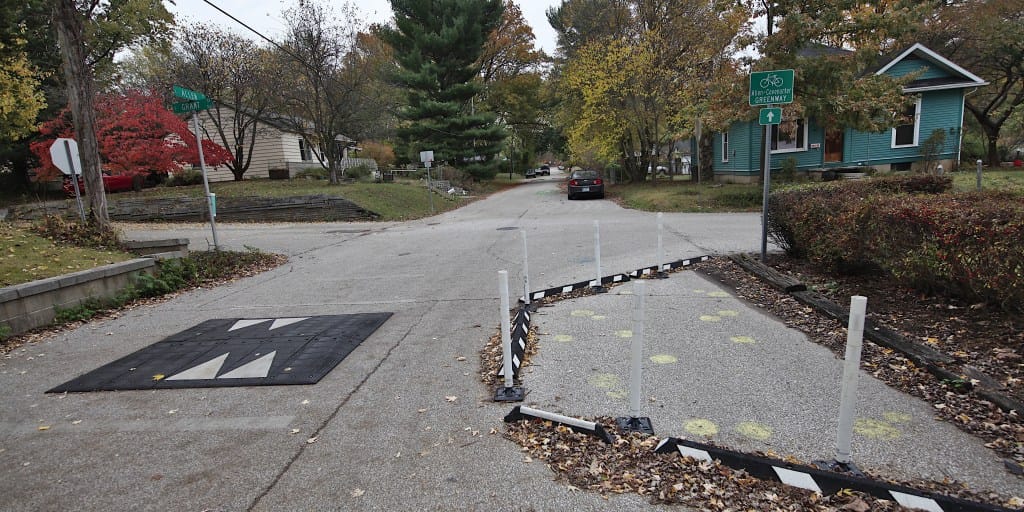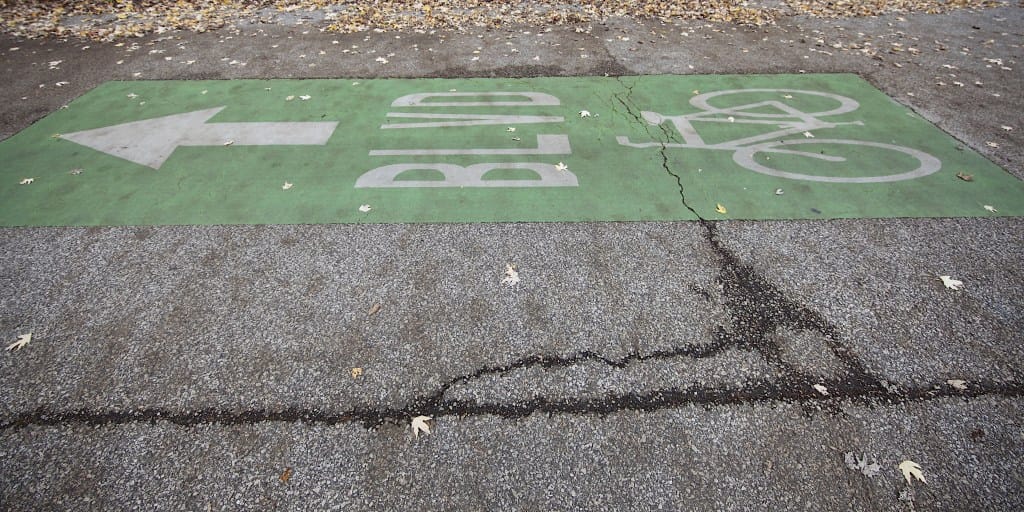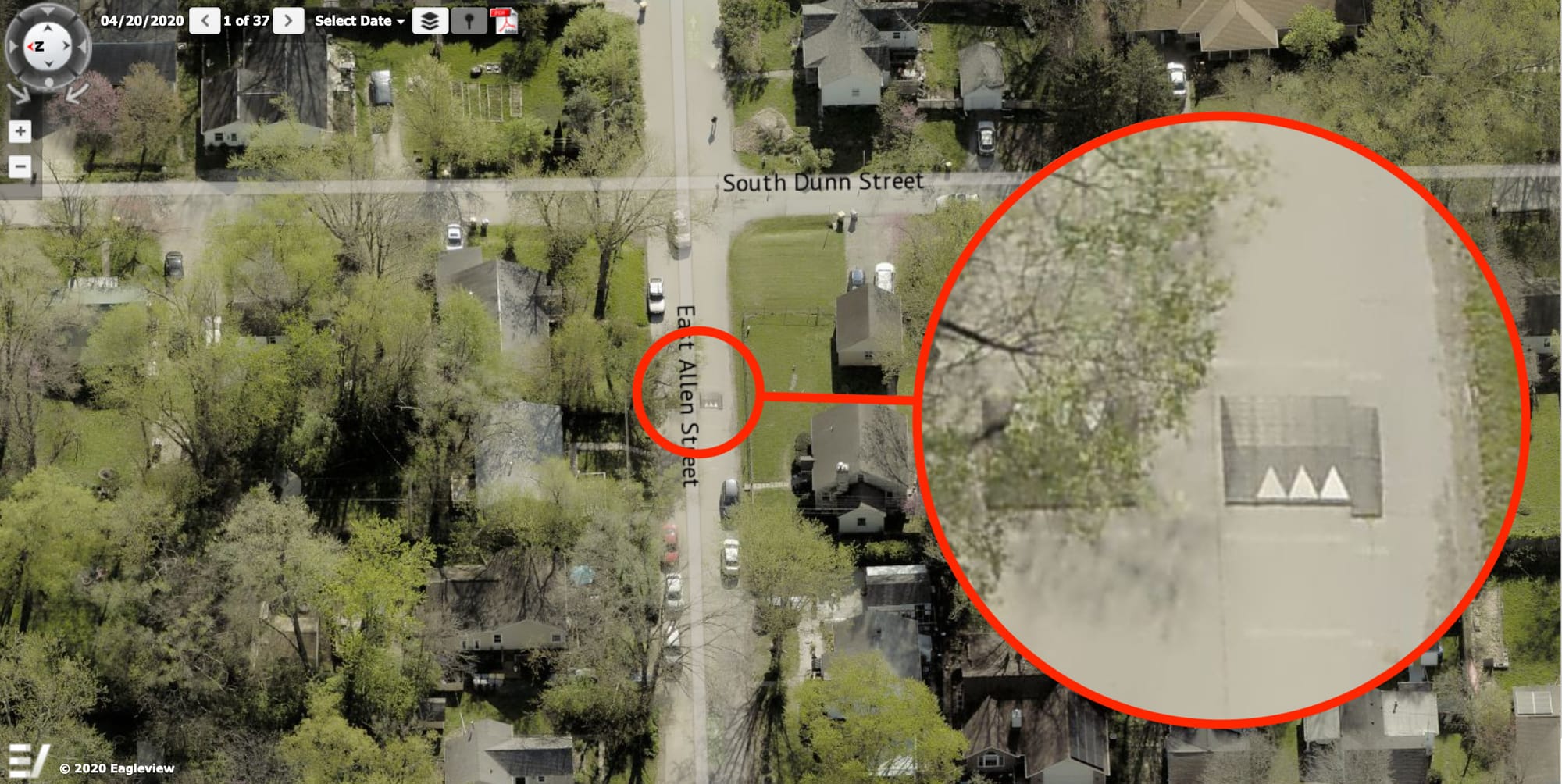Bloomington city council greenlights revised traffic calming program



Bloomington’s neighborhood traffic safety program (NTSP) has been overhauled and replaced with a traffic calming and greenways program (TCGP).
Among other things, the program is meant to help curtail speeding in residential neighborhoods.
When Bloomington’s city council approved the revised program at its meeting last Wednesday, it OK’d more than just a change to the name.
A key difference between the old program and the revised one is the way it measures required neighborhood support for a proposed traffic calming project. The old program required a measurement of neighborhood support at two stages—on application and after a project design was selected.
In the old program, an application petition needed to be signed by 51 percent of households in the affected area. Later, after a project design was selected, more than 50 percent of households had to return a ballot voting in favor of it. That’s a percentage that was applied not to the returned ballots, but to the whole set of eligible households.
In the revised program, the formal voting step has been eliminated. And the petitioning step has a reduced signature threshold. Instead of requiring 51 percent of signatures from households in the affected area, it’s now 30 percent of households or 24 signatures, whichever is less.
As proposed to the city council by Bloomington’s bicycle and pedestrian coordinator, Mallory Rickbeil, the percentage threshold was still 51 percent. But the city council approved an amendment during their Wednesday meeting that reduced the percentage to 30. Councilmember Jim Sims dissented on the amendment by abstaining from the vote. Sims voted for the new program as amended, which made the tally unanimous.
What persuaded the city council to revise the program is the fact that few traffic calming projects have been implemented in the two decades since it was created. According to Rickbeil’s memo, “In the twenty-one years since its adoption, very few projects have successfully installed traffic calming as a result of following the current program, and the lack of successful projects is not due to a lack of interest.”
On a yearly basis, Rickbeil said she envisioned spending about $50,000 of the city alternative transportation funds on traffic calming. The alternative transportation fund gets revenue from the city’s neighborhood parking permit program. Rickbeil translated that dollar figure into projects by saying a pair of speed cushions costs about $5,000, which is 10 sets of speed cushions per year, and that means about two projects per year, she said.
The program also includes a staff-led program for installing neighborhood greenways, which can include bumpouts created with pylons and curbing.
Rickbeil drew on her personal experience as she worked to rewrite the program over the last year and a half. She lives in the Broadview neighborhood. Broadview, along with the area near Summit Elementary School, were two neighborhoods that she had shepherded through the old process. Neither neighborhood was able to meet the old program’s criteria for demonstrating neighborhood support.
As Rickbeil put it, the petition signature threshold was reached, but the balloting process was “the sinking ship.”
Councilmember Ron Smith said he knew of some residents in his neighborhood who supported the change to the program. He said, “I know there’s some really excited people near where I live that are really fired up.”
“I’m one of those excited people councilmember Smith mentioned,” Katie Yoder said during public commentary. She introduced herself as a resident of Parkridge East, close to Morningside Drive. About the amendment reducing the threshold from 51 percent to 30 percent, which was introduced by councilmember Kate Rosenbarger, Yoder said it was “incredibly daunting” to try to gather neighborhood support along Morningside Drive and from houses within 300 feet. The reduced threshold would make the process more accessible, Yoder said. It would save some postage stamps or door knocking during a pandemic, she said.
What appeared to persuade some councilmembers was the fact that the new program includes a step for city staff to evaluate objectively if there’s speeding in the neighborhood where a traffic calming project is requested. Part of the description of the step says, “Relevant data may include crash history, speed counts and volume data, and other relevant facts.”
Councilmember Dave Rollo sought confirmation of that: “Planning and transportation, you’re going to …to lay counters, and you’re going to find out if that is indeed occurring, right? To validate any application that traffic calming is necessary, correct?”
Reickbeil pointed Rollo to the draft rubric that is included in the background materials. The rubric scores speeds, crashes and the like, to help rank and prioritize projects. It’s a rubric that has not yet been adopted by the bicycle and pedestrian safety commission, which will evaluate the projects. The status of the rubric as not-yet-adopted appeared to bother Rollo a bit, but did not dissuade him from voting in favor of the revision to the program.
Sims, who abstained on the amendment to reduce the signature threshold, did not seem comfortable with the idea that less than a majority of neighbors, in an already area of consideration that was smaller than a whole neighborhood, would be sufficient to meet the signature threshold.
Councilmember Sue Sgambelluri asked how the process could be stopped, if a majority of residents in the affected area opposed it. “I would feel better about the amendment, if I knew that there was a process in place to stop it,” Sgambelluri said.
The answer from Rickbeil was that opposition from residents in the affected area is something that the bicycle and pedestrian safety commission could consider when it evaluates a project.
A different kind of answer came from Greg Alexander, during public commentary. Alexander’s basic point: Safety for pedestrians and cyclists should not be put up for referendum:
The risk here, that you’re a little bit worried about, is: What if some anti-car nut-jobs in the neighborhood, just a small tiny minority, get together and then are able to push through a traffic calming plan that wrecks the rest of the neighborhood for everybody else.
And I can’t imagine any scenario less realistic, because I mean, getting people to obey the speed limit is the goal of this program. If you think that it wrecks the neighborhood, to have people following the speed limit, I don’t care if you are the majority, you should be disenfranchised from that decision. Safety is not something that should be put up to a public referendum. Safety is an essential city service. …I think a small group of neighbors should be able to ram down their neighbor’s throats, a safe street. I think a safe street is not an evil that we need to avoid. I don’t understand any sort of concern, saying that some silent majority of neighbors actually prefers to speed.
…We had in our transportation plan, the draft plan, called for calming Walnut, and College and 3rd streets by turning them into streets again instead of a divided highway. And that got just a little just a little whisper of public opposition at the time that was in the planning commission, and that just got yanked out of there. We’re letting an angry mob take safety out of a plan. Well, how many pedestrians have died on 3rd Street and College and Walnut since that was yanked out of that plan? Three. Three pedestrians have died there. We owe people safety.
Coming up soon on the calendar will be another topic connected to use of money in the alternative transportation fund: Sidewalks. The city council’s sidewalk committee typically meets towards the end of the year, to review requested sidewalk projects.
In support of her amendment to reduce the signature threshold, councilmember Kate Rosenbarger offered a table showing the contrasting impact. Collecting 24 signatures would still amount to a substantial percentage, for smaller areas.
Table: Analysis of impact of 51 versus 30 percent on signature requirements
| Applications Requiring the Lesser of 51% or 24 Homes | ||||
| Number of homes |
Collecting 51% |
Collecting 24 signatures |
% for gathering 24 signatures |
Lesser of the two |
| 25 | 13 | 24 | 96% | 13 (52%) |
| 50 | 26 | 24 | 48% | 24 (48%) |
| 100 | 51 | 24 | 24% | 24 (24%) |
| 200 | 101 | 24 | 12% | 24 (12%) |
| Applications Requiring the Lesser of 30% or 24 Homes | ||||
| Number of homes |
Collecting 30% |
Collecting 24 signatures |
% for gathering 24 signatures |
Lesser of the two |
| 25 | 8 | 24 | 96% | 8 (30%) |
| 50 | 15 | 24 | 48% | 15 (30%) |
| 100 | 30 | 24 | 24% | 24 (24%) |
| 200 | 60 | 24 | 12% | 24 (12%) |
Aerial shots of existing Allen Street Greenway
These images are from the Pictometry module of Monroe County’s online GIS system.






Comments ()